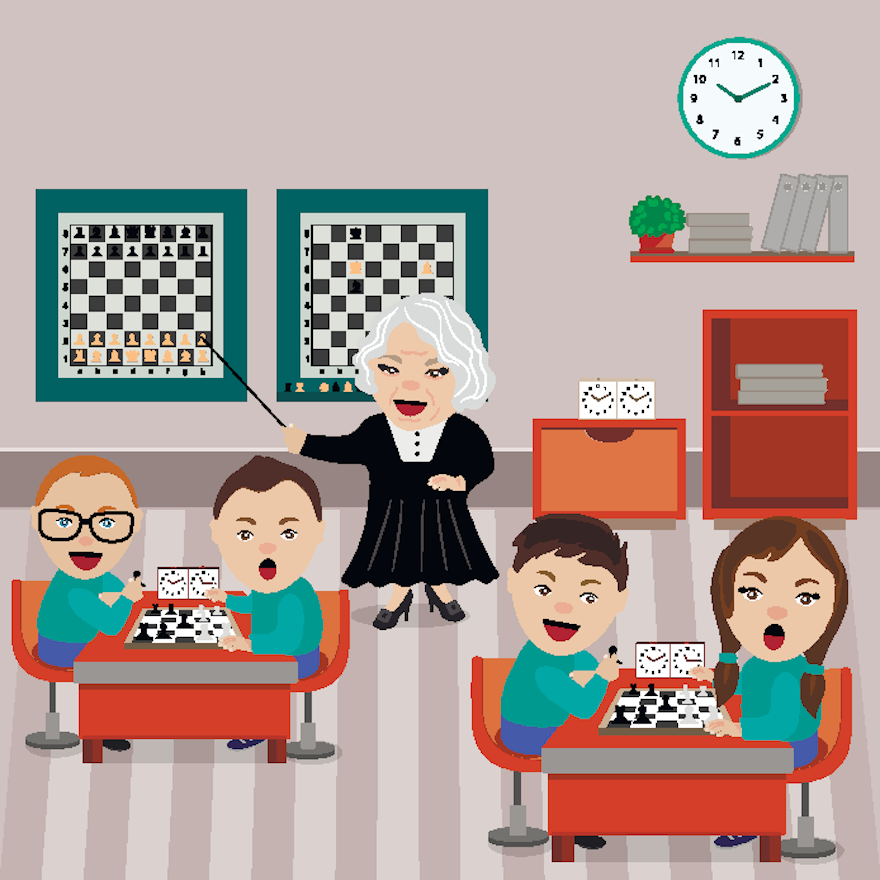Running a school chess club can be very rewarding and schools are usually supportive of such a venture. I started a school chess club back in 2017 when my boys were aged 7 and 5. I contacted the head teacher and offered to run a lunchtime chess club. The school was extremely supportive and I ran the club for 3 years for children aged 5 - 11 until my boys moved to a different school. I learned many things from this experience and wanted to share tips for teachers, parents or coaches who might be interested to set up a club at their school.
This is a 5 part series that will cover the following topics:
- Room and Equipment
- Instruction vs play
- Getting everyone involved
- Keeping it fun
- Running tournaments and ladders
2. Instruction vs play
In general it is best to focus on getting children playing against each other as opposed to trying to deliver too much instructive content. However spending 5 minutes at the beginning of each club session to highlight some key concepts such as how you can get out of check, the relative value of pieces or introducing a move like castling can be very valuable. If it is an after school club for say an hour you might have more scope for having 10-15min of instruction before the children start playing.
Any type of instruction should be interactive and so asking questions of the group is a good way to engage them. Playing through a famous game on a board (or demo board) for the children to follow can be very valuable. I recall showing the famous Paul Morphy 'Opera game' in one club session and the children spontaneously all applauded after the beautiful mate at the end of the game.
Another valuable time for instruction is when children invariably put their hand up during a game to ask if something is allowed or if it is checkmate. This provides a great opportunity to ask them some questions for example if they think it is checkmate ask them what are the 3 ways to get out of check. Help and guide them to work out if it is really checkmate.
Many games will result in one child only having a king and the other having a number of pieces and checking them. Children rarely resign so these positions often play out until the end of the club with the king being endlessly checked and chased around the board or in several cases being stalemated. Before they pack up and go it can be very helpful to show them some basic mating concepts of pushing the king to the edge of the board with pieces like queens and rooks. It is very rewarding to see them show you next time how they checkmated someone using that newly acquired knowledge.
Children are much more receptive to instruction when they are in the middle of a game or have just finished and are given tips based on what they have just played. They can more easily relate and process these instructive pointers rather than more general instruction outside of a particular game. If there are an odd number of children in any given club session you can play against one of the children and take the opportunity to ask them questions from time to time about the move they just made or that you just made. Learning whilst playing then seems to be the best formula that allows children to learn progressively as they enjoy playing the game.
Part 3 of this series will cover how to cater and engage with children of different abilities ranging from having never played chess before through beginners to competent players.

